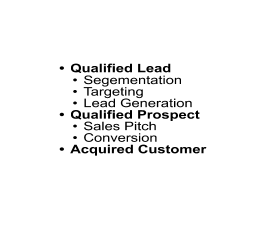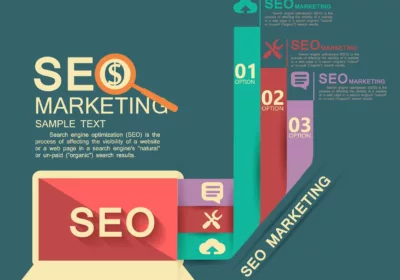
Comparison Between Prospects Vs Lead Vs Conversion

Prospect, Lead, Customer, referrals are different phases of customer journey. It’s the sales process that begins with gathering leads, qualifying leads into prospects and then converting prospects into customers in the selling phase.
The selling phase of the typical sales cycle begins once there is a qualified lead. The selling phase can be short or long and can be based on many factors such as a prospects wants or needs, and how well the product promotion is and the benefits of what the product has to offer.
Lead
Lead is a qualified prospect who fits in the definition of your target audience and is willing to have continued correspondence with you. He has that specific problem which can be solved by your products within his budget that match your price and within his required timeline. This combination gets him ready for a buying decision.
Lead is a potential client that you get by your marketing activities as a direct walk-in to a store front or on a website visit for whom you have all the baseline data of demographics and contact details.
A lead that has shown interest and who can be converted within a specific timeframe is a hot lead.
Lead that can be converted but might not be within that specific timeframe is a warm lead.
A lead who can be converted but not now for various reasons is a lead that is gone cold.
A lead is created when a person/possible customer enquires about the company’s product or service. They inquire that they are selling through social media or their website. Keep in mind that a lead may not get the sale right away. You have got them in the sales process and convert them into a Prospect.
A lead is a pre-pre-sale; the first stage in the sales process.
A Prospect
Prospects are a business’ greatest asset. Prospects are a future revenue stream. First step in sales process is to determine if the given contact is a sales prospect. Once the person meets the given criteria, he is considered as a prospect and then you can move into the next phase of the selling process.
Let’s see the prospecting stage in detail:
Prospecting is simply finding leads and try to convert them into prospects. These leads may come from a variety of places such as databases, lists, phone directories, networking, etc. It does not matter what form you use to gather leads; your ultimate goal is to determine if the person could become a prospect.
A lead who is fit for your products/services who is ready to move toward a decision and ready to have a conversation with your sales team can be termed as a Prospect.
A prospect fits in your target market also has the means or money to buy your product and is able to make buying decisions.
Simply, a prospect just needs to meet the above criteria and qualify but not necessarily to have an interest in buying.
Once you get that lead that fits at least one your criteria; you further try to qualify them under other criteria as well. The next phase is the selling phase. It is done in many ways like making a phone call, arranging in-person meeting, requesting online form, sending email, etc.
Your goal is to determine if a lead is a good candidate for what your product/ service has to offer, and has the money and ability to buy.
In this process the selling phase can be sometimes very short or sometimes very long.
It depends on many factors like
- The quality of your product.
- Whether the prospect wants your product or not ,
- how well the promotion is done
- The benefits of what the product has to offer.
Customer (Conversion& Acquisition)
A conversion happens when the prospect’s need and queries are addressed correctly exactly the way he wants.
A conversion is how you market the product well and convert the prospect as your loyal client and sometimes even a lifelong customer on your product.
Companies always play well with their leads and they consistently keep communicating with their conversions every now and then.
Lead generation is the first step to the conversion and it is important for a company to convert this lead to the customer since higher the conversion rate better the success rate of that marketing strategy.
In simple words: Conversion is a sale. A customer when he buys any product either by walking in a store front or visit website. Hence, he was a lead when entered and became a conversion on exit. A lead becomes a prospect; a prospect converts to a sale, and hopefully a repeat buyer.















